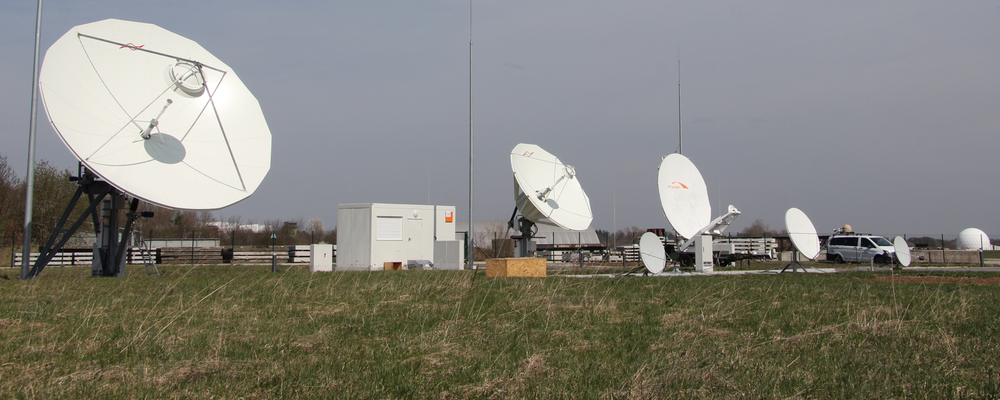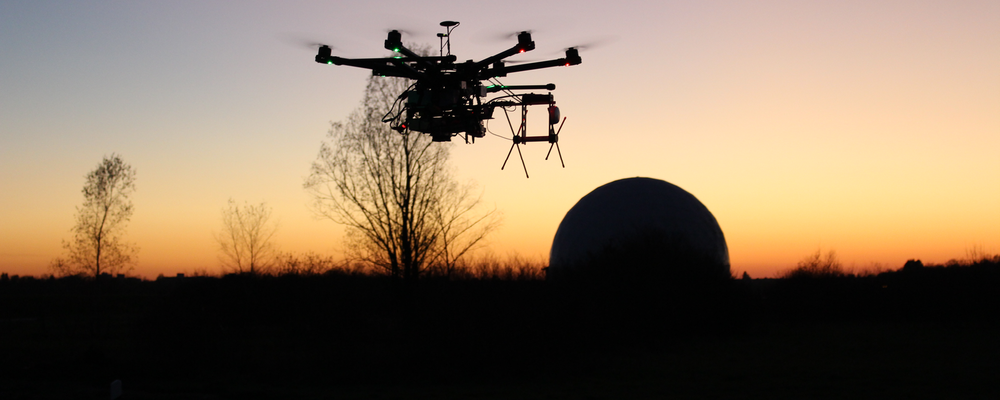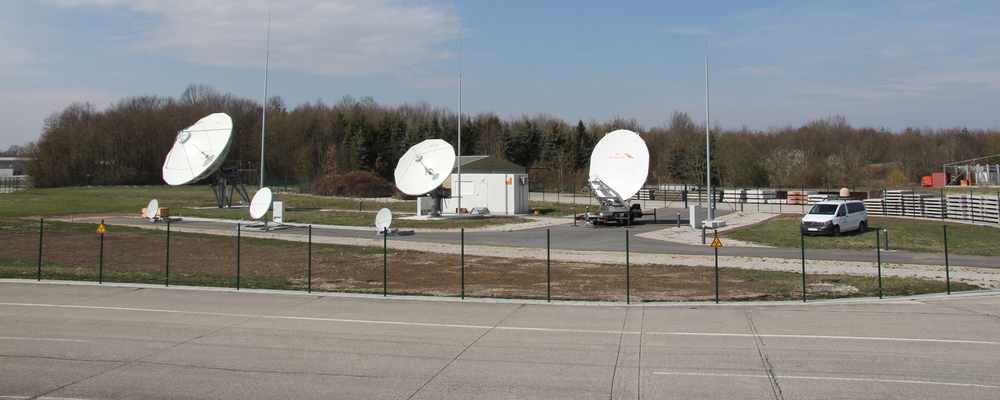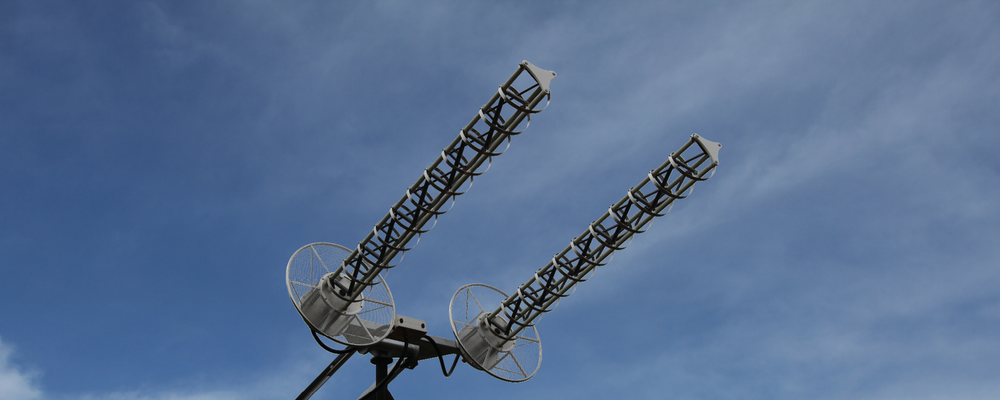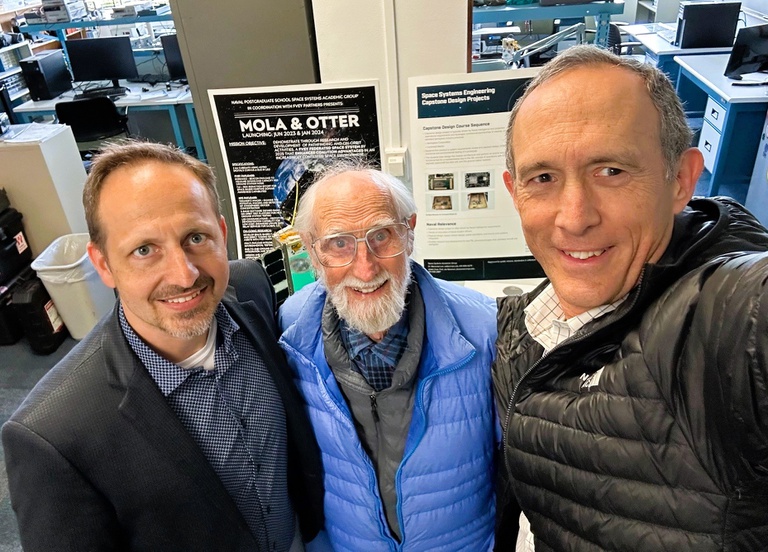 - Prof. Andreas Knopp, Emeritus Professor Prof. Rudolf Panholzer and former Space Shuttle Astronaut Prof. James H. Newman (Chair and Professor, Space Systems Academic Group)
Cooperation within the NPS ground station network
April, 2024: As part of the long-standing academic cooperation between the Naval Postgraduate School (NPS) and the University of the Bundeswehr Munich (UniBw M), which was initiated almost five decades ago by the now 95-year-old Emeritus Professor Rudolf Panholzer with professors from the then Faculty of Electrical Engineering, Prof. Andreas Knopp, himself a Recurring Visiting Professor at the Space Systems Academic Group, has completed another research visit. This time, the focus was on the small satellite project SeRANIS. Experts from the NPS, who recently successfully launched another small satellite called MOLA, were involved in the Critical Design Review (CDR) of SeRANIS in March. The first steps have now been taken towards the joint use of the NPS ground station network known as Mobile CubeSat Command and Control (MC3) network, a Department of Defense-sponsored effort that began in 2011 at NPS. Today, the MC3 network is used exclusively for projects of the alliance known as Five Eyes (FVEY) between the USA, Canada, New Zealand, the United Kingdom and Australia to pursue common interests in the field of signal intelligence. However, an expansion of the alliance to include Germany and France has been discussed and promoted for several years through various activities. "The special thing about the MC3 network today is that it is already home to American universities, civilian institutions, industry partners, and governmental agencies," says Andreas Knopp. "Even though we are still at the beginning, the SeRANIS project seems to be the perfect way to integrate Germany into the alliance with the unique small satellite infrastructure here at UniBw M. Signal intelligence will be one of the driving topics in the coming years, and small satellites will make their contribution. Therefore, it seems quite obvious that SeRANIS should act as a role model to be exploited in future mission for the Bundeswehr as well as in the NATO context. Strategic partnerships on all operational levels including academia are thus essential."
|
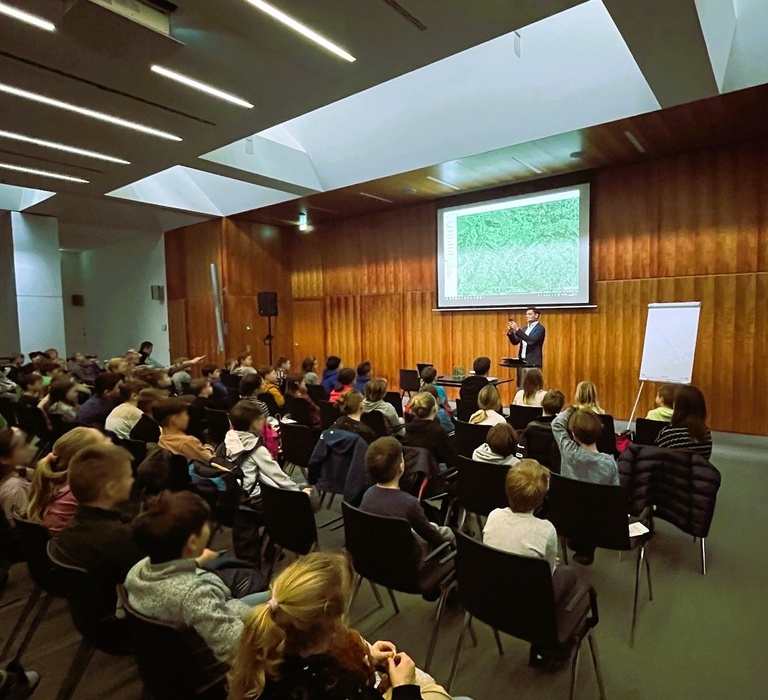 - © Universität der Bundeswehr München/Knopp
Enthusiastic junior researchers
March, 2024: At the children's university in the Vogtland district in the city of Plauen, our expert Christian Hofmann attracted a very large audience with the topic of space.
Under the title "What's flying in space - and why?" more than 100 children learned why there are so many satellites in space, what their tasks are, and how they get into orbit and stay there.
Hopefully, we have inspired many children and gained a new group of space enthusiasts and future engineers.
|
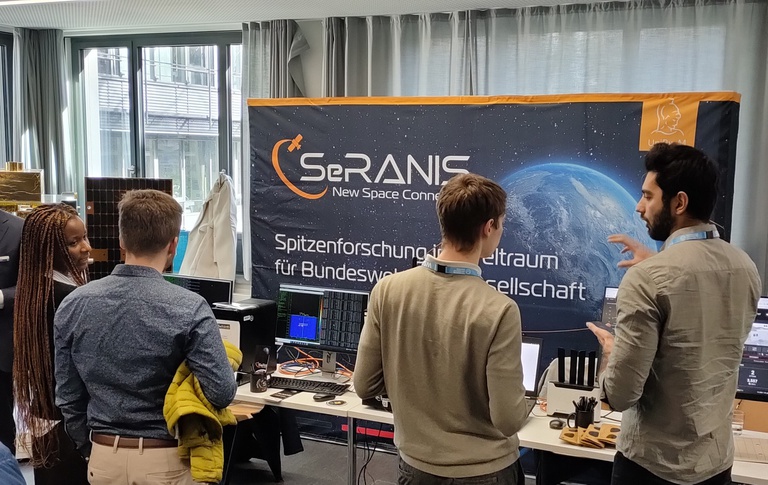 - © Universität der Bundeswehr München/Tuzi
B5G/6G Demonstrator at WSA 2024
From March 17–19, 2024, SeRANIS PhD students Diego Tuzi, Pheobe Agbo and Sertaç Kaya presented a B5G/6G Demonstrator in the exhibition area of the 27th International Workshop on Smart Antennas WSA 2024 hosted at TU Dresden with the co-sponsorship of IEEE, IEEE Communication Society, and 5G Lab Germany.
Our demo showed an operational example of integration between terrestrial and non-terrestrial networks in which the Core and Radio Access Network (RAN) of a mobile cellular system are connected through a Low-Earth Orbit (LEO) satellite network instead of a fiber connection.
The Core side of the network was implemented using the open5GCore solution developed by Fraunhofer FOKUS, the end-to-end LEO satellite system was emulated using the opensource project openSAND, developed by CNES and Thales Alenia Space, and the RAN side used a gNB base station from Amarisoft which enabled over-the-air connection with conventional smartphones and modems.
Our demo showed that common applications tolerate the delay and performance typical of LEO satellite networks. This type of architecture, namely LEO satellite backhauling, can extend the coverage of terrestrial networks into remote areas where fiber or microwave links cannot be installed, providing a quality of experience very similar to that of ordinary terrestrial networks.
LEO satellite backhauling, together with direct connectivity between satellite and common terrestrial devices, will enable the ubiquitous connectivity envisaged by the ITU's IMT-2030 (6G) vision. Our ATHENE 1 satellite, among other experiments, will allow us to test RF/optical backhauling and direct connectivity solutions. We look forward to the launch of ATHENE 1, scheduled for 2025.
We would like to thank the organizers of WSA 2024 for the warm hospitality and the audience for their interest and curiosity in our demonstration, the ATHENE 1 satellite and the SeRANIS mission.
|

